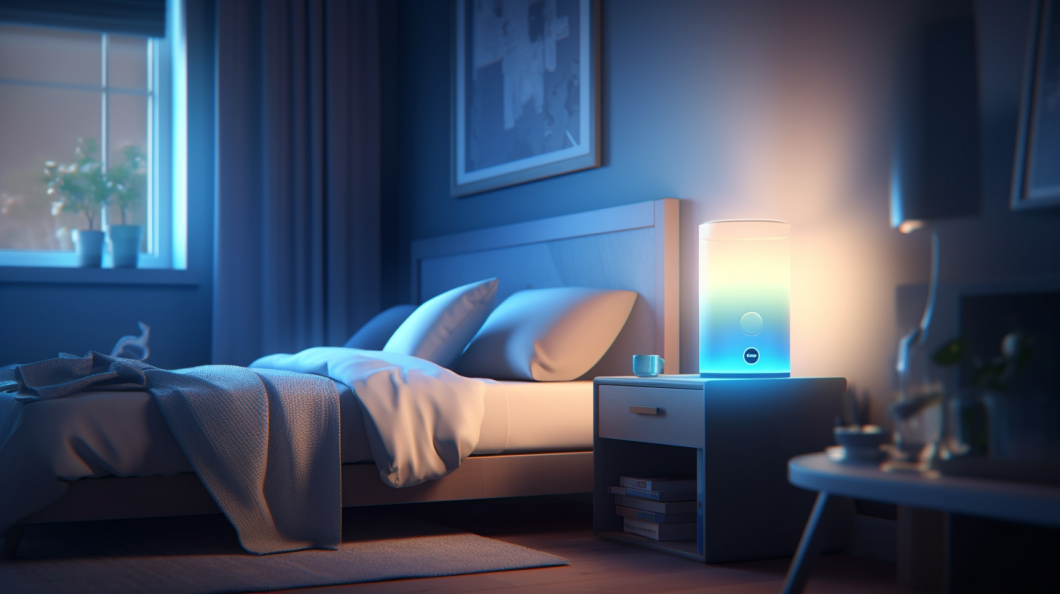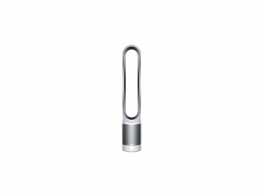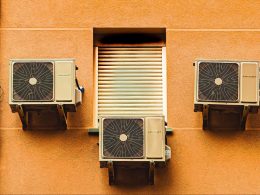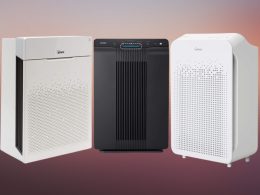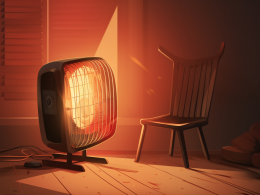In our increasingly urbanized and industrialized world, the quality of the air we breathe is often taken for granted. Yet, poor indoor air quality can have serious effects on our health and well-being, leading to allergies, respiratory issues, and even impairing our sleep quality. One way to mitigate this is through the use of air purifiers, devices designed to cleanse the air in our homes, offices, and other indoor spaces, making it healthier and safer for us to breathe.
Air purifiers work by trapping and neutralizing pollutants such as dust, allergens, smoke, and other particles, contributing to an overall improvement in air quality. They can be especially beneficial for individuals with allergies, asthma, or other respiratory conditions. But beyond the make and model of an air purifier, its efficiency also greatly depends on where it is placed within a room or space.
In this blog post, we will explore the concept of air purifiers in more depth, discussing how they work and why they are important. We’ll delve into the crucial aspect of where to place these devices for optimal results and provide specific recommendations for different types of rooms. We will also address some common mistakes people make when placing their air purifiers and offer tips for maximizing the efficiency of these useful devices. Whether you’re a new air purifier owner or simply looking to get the most out of your existing device, this guide is for you. Let’s dive in.
Understanding Air Purifiers
Air purifiers are designed to improve the quality of the air we breathe by removing harmful particles and pollutants. Understanding how these devices work is essential for determining the best placement to maximize their effectiveness.
Definition and Explanation of How Air Purifiers Work
Air purifiers employ various mechanisms to capture and eliminate airborne contaminants. The most common types of air purification technologies include:
- High-Efficiency Particulate Air (HEPA) Filters: These filters are highly effective at trapping microscopic particles such as dust, pollen, pet dander, and mold spores. HEPA filters can capture up to 99.97% of particles as small as 0.3 microns.
- Activated Carbon Filters: These filters excel at adsorbing and neutralizing odors, volatile organic compounds (VOCs), and chemicals. They are particularly useful for removing smoke and unpleasant odors from the air.
- Ultraviolet (UV) Germicidal Irradiation: UV light can destroy microorganisms like bacteria and viruses by damaging their DNA. Air purifiers with UV-C lamps can help reduce the spread of airborne pathogens.
- Ionizers: Also known as ion generators or negative ion purifiers, these devices release negatively charged ions into the air, which attach to airborne particles, making them heavier and causing them to settle on surfaces.
Different Types of Air Purifiers
Air purifiers come in various types, each employing different technologies to purify the air. The most common types of air purifiers include:
- Standalone Units: These portable air purifiers are designed to purify the air in a single room or small area. They typically feature a combination of filters and sometimes incorporate additional technologies such as UV lights or ionizers.
- Whole-House Air Purifiers: Installed in HVAC (Heating, Ventilation, and Air Conditioning) systems, these purifiers clean the air throughout the entire home by treating the air as it passes through the ductwork.
- In-Duct Air Purifiers: These purifiers are installed directly into the air ducts, treating the air before it circulates into individual rooms. They are often integrated with the HVAC system.
Why Placement of Air Purifiers Matters
The placement of an air purifier significantly impacts its performance. The strategic positioning of the device ensures that it can effectively capture and circulate the air, improving the overall air quality in a given space. Proper placement can maximize the purifier’s ability to remove pollutants and allergens, reduce odors, and create a healthier indoor environment.
By understanding the mechanics of air purifiers and the importance of their placement, you’ll be better equipped to determine where to position these devices for optimal results. In the following sections, we will delve into specific recommendations for different room types and address common mistakes to avoid when placing air purifiers.
Ideal Placement for Air Purifiers
Now that we understand the importance of air purifiers and how they work, let’s explore the ideal placement for these devices in various room types to maximize their effectiveness.
Bedrooms
The bedroom is where we spend a significant amount of time, especially during sleep. Placing an air purifier in the bedroom can help create a clean and fresh environment. It is recommended to position the air purifier near the bed, preferably at a distance of a few feet, to ensure that the clean air is directed towards the sleeping area. This placement can help improve sleep quality by reducing allergens and pollutants in the immediate vicinity.
Living Room
The living room is often a central gathering space where we spend a considerable amount of time with family and friends. To effectively clean the air in this area, it is advisable to place the air purifier in a central location within the room. This allows for optimal air circulation and ensures that the purified air reaches all corners of the living space. Avoid placing the air purifier near furniture or walls that may obstruct airflow.
Kitchen
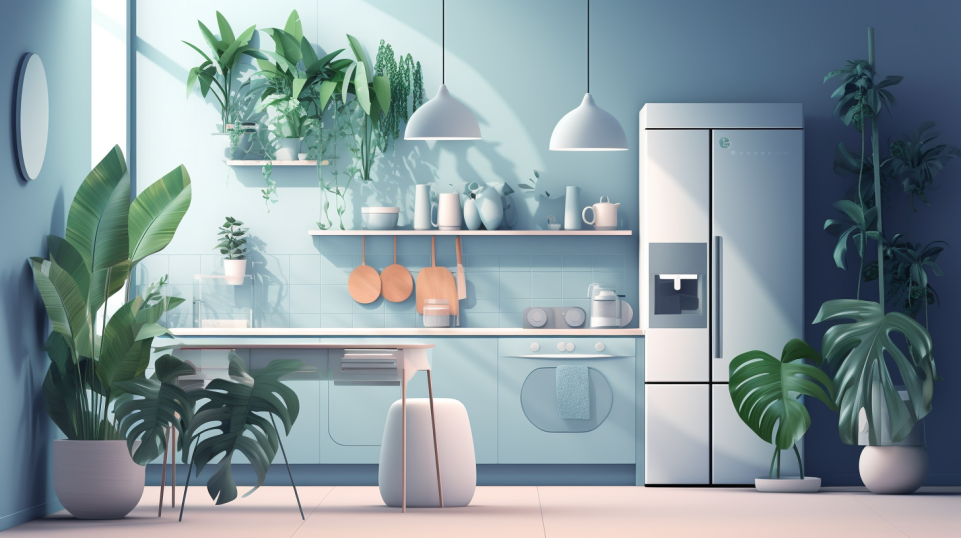
The kitchen is prone to various airborne contaminants, such as cooking odors, smoke, and grease particles. Placing an air purifier in the kitchen can help remove these pollutants and maintain a healthier indoor environment. Position the air purifier away from the cooking area but close enough to capture and filter the air effectively. Avoid placing it too close to stovetops or other heat sources to prevent damage to the device.
Office
For those who work from home or have a dedicated office space, an air purifier can help create a clean and productive atmosphere. Place the air purifier near your desk or in a central location within the office to ensure that you are breathing clean air while working. Consider the size of the room and the airflow patterns to determine the ideal placement for maximum coverage.
Children’s Room
Children are often more susceptible to airborne allergens and pollutants, making it crucial to prioritize air quality in their rooms. Position the air purifier near the areas where your child spends the most time, such as their bed or play area. This placement helps ensure that the air they breathe is as clean as possible, reducing the risk of allergies or respiratory issues.
The Concept of “Airflow” and How It Affects Purifier Efficiency
Understanding the concept of airflow is essential when placing air purifiers. Proper airflow allows the device to efficiently capture and filter the air in the room. Avoid obstructing the airflow by keeping the air purifier away from walls, furniture, or curtains. Ensure that there is sufficient space around the purifier for air to circulate freely.
The Benefit of Placing Purifiers Near Pollution Sources
Placing air purifiers near pollution sources can be particularly beneficial. For example, if there is a specific area in the room where pollutants are generated, such as near a pet’s bedding or a smoking area, positioning the air purifier nearby can help capture and eliminate the pollutants at the source.
By following these recommendations, you can optimize the performance of your air purifier and create a cleaner and healthier indoor environment. In the next section, we will discuss common mistakes to avoid when placing air purifiers.
Common Mistakes in Air Purifier Placement
While understanding the ideal placement for air purifiers is important, it is equally crucial to be aware of common mistakes that can hinder their effectiveness. Avoiding these mistakes will ensure that your air purifier functions optimally and provides the desired results.
Obstruction of Airflow
One common mistake is obstructing the airflow around the air purifier. Placing the device too close to walls, furniture, or other objects can impede the flow of air and reduce its efficiency. Ensure that there is ample space around the air purifier for unrestricted airflow, allowing it to capture and filter the air effectively.
Placement in Rarely Used Areas
Another mistake is placing the air purifier in areas of the room that are rarely used or tucked away in a corner. Air purifiers are most effective when placed in high-traffic areas where they can continuously filter the air that occupants breathe. Consider placing the air purifier in rooms where you spend the most time, such as bedrooms, living rooms, or home offices.
Placing Too Close to Electronics or Heat Sources
Avoid placing the air purifier in close proximity to electronics or heat sources such as televisions, computers, or heaters. These devices can generate heat or electromagnetic fields that may interfere with the air purifier’s functionality or cause damage. Keep a safe distance between the air purifier and such equipment.
Not Considering Room Size When Placing Air Purifiers
The size of the room plays a crucial role in determining the effectiveness of an air purifier. Smaller rooms will require a lower-capacity purifier, while larger spaces may need multiple units or more powerful models. It is essential to consider the square footage and airflow dynamics of the room when selecting and placing an air purifier to ensure proper coverage.
By avoiding these common mistakes, you can optimize the performance of your air purifier and achieve cleaner and healthier air in your indoor spaces.
In the next section, we will discuss other factors to consider when positioning air purifiers, including floor level, distance from walls and furniture, and the impact of open or closed doors and windows.
Other Factors to Consider When Positioning Air Purifiers
In addition to the ideal placement for air purifiers and common mistakes to avoid, there are other important factors to consider when positioning these devices. Taking these factors into account will further enhance the effectiveness of your air purifier and ensure cleaner air in your living spaces.
Consideration of Floor Level
The floor level where you place your air purifier can impact its efficiency. In general, it is recommended to position the device at a moderate height, such as a tabletop or elevated shelf level. This placement helps facilitate better air circulation and ensures that the purifier can effectively capture pollutants that tend to settle closer to the ground.
Importance of Distance from Walls and Furniture
Maintaining an appropriate distance between the air purifier and walls or furniture is crucial. Placing the device too close to walls or large furniture pieces can hinder proper airflow and reduce its effectiveness. Aim to position the air purifier at least a few feet away from obstacles to allow for optimal air circulation and filtration.
The Impact of Closed Versus Open Doors and Windows
The status of doors and windows in a room can affect the performance of an air purifier. If you want to clean the air in a specific room, it is generally recommended to keep the doors and windows closed during operation. This helps prevent outside pollutants from entering the room and allows the air purifier to focus on filtering the existing indoor air.
The Role of Ceiling Height in Purifier Placement
The ceiling height of a room can influence the placement of an air purifier. In rooms with high ceilings, it is advisable to position the air purifier at a lower level, closer to the breathing zone. This helps ensure that the purified air is directed towards occupants rather than accumulating at higher levels where it may have limited impact.
Considering these additional factors alongside the ideal placement recommendations and avoiding common mistakes will help you achieve the best results from your air purifier. In the next section, we will provide tips for maximizing air purifier efficiency, including regular maintenance, using multiple units for larger spaces, and combining air purifiers with other air-quality-improving practices.
Tips for Maximizing Air Purifier Efficiency
To maximize the efficiency of your air purifier and enhance its performance, consider implementing the following tips:
Regular Maintenance and Filter Changes
Proper maintenance is essential for the optimal functioning of your air purifier. Follow the manufacturer’s guidelines for cleaning and replacing filters. Clogged filters can reduce the airflow and diminish the purifier’s effectiveness. Regularly cleaning or replacing filters ensures that the device can capture pollutants efficiently, providing cleaner air.
Using Multiple Units for Larger Spaces
For larger rooms or open-concept areas, a single air purifier may not be sufficient to adequately clean the air. Consider using multiple units strategically placed throughout the space. This approach helps ensure that the entire area receives sufficient coverage, allowing for more effective air purification.
Combining Air Purifiers with Other Air-Quality-Improving Practices
Air purifiers work best when complemented with other practices to improve indoor air quality. These practices may include regular dusting and vacuuming, minimizing the use of harsh chemicals, proper ventilation, and reducing the presence of indoor pollutants such as smoking or pet dander. By combining these efforts, you create a comprehensive approach to maintaining cleaner and healthier air in your environment.
By implementing these tips, you can optimize the performance and efficiency of your air purifier, creating a cleaner and healthier indoor space. In the next section, we will address some frequently asked questions related to air purifier placement to provide further clarity and guidance.
Frequently Asked Questions About Air Purifier Placement
Can I move my air purifier from room to room?
Yes, most portable air purifiers are designed to be moved easily from one room to another. This flexibility allows you to target specific areas or rooms where air quality needs improvement. However, keep in mind that for optimal results, it’s recommended to have dedicated air purifiers in frequently used rooms for continuous filtration.
Should I place my air purifier on the floor or at a height?
Placing the air purifier at a moderate height, such as on a tabletop or elevated shelf, is generally beneficial. This positioning allows for better air circulation and filtration, capturing pollutants that tend to settle closer to the ground. However, placing the air purifier on the floor is also acceptable, especially if it features a multi-directional air intake that can effectively pull in air from various angles.
How far should my air purifier be from my bed?
To benefit from clean air while sleeping, it’s recommended to position the air purifier a few feet away from your bed. This placement ensures that the purified air is directed toward your sleeping area, providing you with cleaner air to breathe throughout the night.
How do I know if my air purifier is placed correctly?
A few indicators can help determine if your air purifier is placed correctly. Firstly, check for proper airflow by ensuring that there are no obstructions around the device. You should feel a steady flow of clean air coming from the purifier. Additionally, monitor the air quality in the room. If you notice a significant reduction in airborne allergens, odors, or dust accumulation, it’s a good indication that the air purifier is placed correctly.
Conclusion
In this comprehensive guide, we have explored the importance of air purifiers and their role in improving indoor air quality. We discussed the ideal placement for air purifiers in different room types, highlighting the significance of strategic positioning for optimal results. Additionally, we addressed common mistakes to avoid when placing air purifiers and provided tips for maximizing their efficiency.
By placing air purifiers in key areas such as bedrooms, living rooms, kitchens, and offices, we can create cleaner and healthier environments. Considering factors like airflow, floor level, distance from walls and furniture, and the impact of open or closed doors and windows further enhances the effectiveness of air purifiers. Combining these efforts with regular maintenance, filter changes, and other air-quality-improving practices ensures that we breathe cleaner air and reap the benefits of improved indoor air quality.
Remember, air purifiers are not a singular solution but rather a part of a comprehensive approach to maintaining a healthy indoor environment. By integrating air purifiers with other practices like regular cleaning, proper ventilation, and reducing pollutant sources, we can create a cleaner and more comfortable living space for ourselves and our loved ones.
We hope this guide has provided valuable insights and guidance on where to place air purifiers for optimal performance. By following these recommendations and considering the specific needs of your space, you can enjoy the benefits of cleaner, fresher air and contribute to a healthier living environment.






